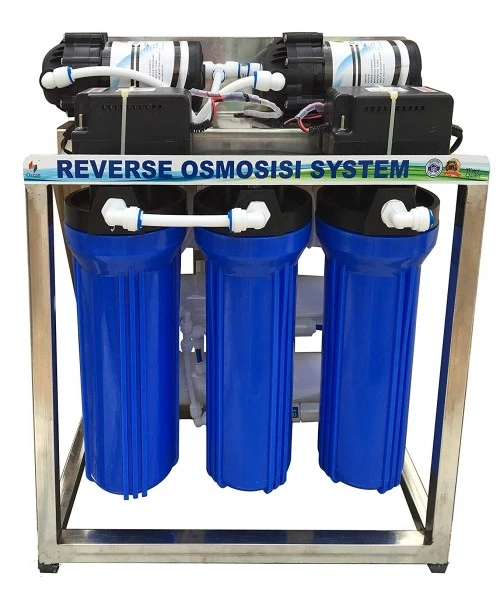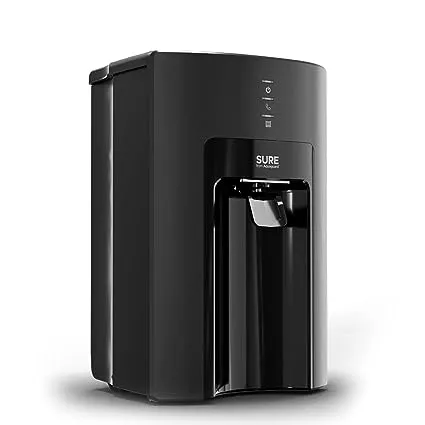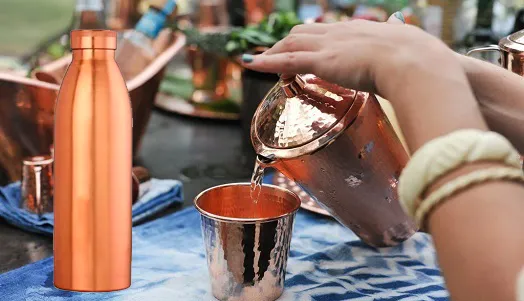Welcome to our comprehensive guide on How To Filter Water at Home, Top 5 Easy and Effective Ways to Purify Water, and Water Purification Methods PDF.
How To Filter Water at Home – Top 5 Easy and Effective Ways to Purify Water | Water Purification Methods PDF

Clean and safe drinking water is a basic necessity for human life. However, the water that comes out of our taps may not always meet the quality standards we expect. “How To Filter Water at Home, Top 5 Easy and Effective Ways to Purify Water”
It can contain various impurities, contaminants, and microorganisms that can pose risks to our health. Fortunately, there are several effective methods for filtering water at home to ensure that it’s safe for consumption. “How To Filter Water at Home, Top 5 Easy and Effective Ways to Purify Water”
In this comprehensive guide, we will delve into five proven ways to filter water effectively and provide you with the knowledge to make informed choices about the water you and your family drink. “How To Filter Water at Home, 5 Effective Ways Filter Water”
Explore the Top 5 Easy and Effective Ways to Purify Water
1. Boiling Water: A Time-Tested Method | How To Filter Water at Home
One of the simplest and most traditional ways to purify water is by boiling it. Boiling water at a rolling boil for about one to three minutes effectively kills most pathogens, including bacteria, viruses, and parasites. This method is especially useful when dealing with potentially contaminated water sources, such as during camping trips or emergencies.
Boiling water works by raising its temperature to a point where microorganisms cannot survive. While it doesn’t remove other types of impurities like chemicals or heavy metals, it’s a reliable method for disinfecting water. Boiling is also an energy-efficient method that doesn’t require any additional equipment. “How To Filter Water at Home, 5 Effective Ways Filter Water”
2. Activated Carbon Filters: Removing Unwanted Tastes and Odors
Activated carbon filters are widely used for improving the taste and odor of tap water. These filters are effective at removing chlorine, volatile organic compounds (VOCs), and some chemicals. Activated carbon is a porous material with a large surface area that adsorbs contaminants as water passes through.
These filters are commonly found in pitcher filters, faucet-mounted filters, and even in refrigerator water dispensers. They are relatively affordable and easy to install, making them a popular choice for households. However, it’s important to note that activated carbon filters might not be as effective in removing heavy metals, minerals, or certain bacteria. “How To Filter Water at Home, 5 Effective Ways Filter Water”
3. Reverse Osmosis (RO) Filtration: Thorough Purification

Reverse osmosis (RO) is a high-powered water filtration method that uses a semipermeable membrane to remove a wide range of contaminants. It’s highly effective at removing dissolved solids, heavy metals, minerals, bacteria, and viruses, producing exceptionally clean water. “How To Filter Water at Home, Top 5 Easy and Effective Ways to Purify Water’
RO systems consist of multiple stages of filtration, including sediment and carbon pre-filters, followed by the main RO membrane. This multi-stage process ensures comprehensive purification. However, it’s worth noting that RO systems can be more expensive upfront and require regular maintenance, including replacing filters and the RO membrane.
4. UV Water Purification: Harnessing Light for Disinfection
Ultraviolet (UV) water purification is a chemical-free method that utilizes UV light to destroy the genetic material of microorganisms, rendering them unable to reproduce and cause infections. This method is particularly effective against bacteria, viruses, and parasites. “How To Filter Water at Home, Top 5 Easy and Effective Ways to Purify Water’
UV purification doesn’t alter the taste, color, or odor of water, making it a suitable method for maintaining water quality without affecting its natural characteristics. However, UV systems require electricity to function and do not remove physical particles or chemicals. They are often used in combination with other filtration methods to provide comprehensive protection.
5. Ceramic Water Filters: Simple and Effective Filtration
Ceramic water filters offer a straightforward yet effective approach to filtering water. These filters are made from a porous ceramic material that traps contaminants and pathogens as water flows through the tiny pores. They are capable of removing bacteria, parasites, sediments, and even larger particles. “How To Filter Water at Home, Top 5 Easy and Effective Ways to Purify Water”
Ceramic filters are often used in areas with limited access to clean water and are relatively inexpensive. They are low-maintenance and do not require electricity or complex installation. However, it’s important to clean and maintain them regularly to prevent clogging and bacterial growth on the filter’s surface. “How To Filter Water at Home, 5 Effective Ways Filter Water”
Get the Best Water Purifier My Recommendation for you
Sure From Aquaguard Delight NXT RO+UV+Taste Adjuster(MTDS) 6L storage Water Purifier,7 stages purification, suitable for borewell, tanker, municipal water(Black) from Eureka Forbes

Potential Side Effects of Water Filtration Methods: What You Need to Know
While water filtration methods are designed to improve the quality and safety of your drinking water, it’s important to be aware of potential side effects that may arise from certain filtration techniques. “How To Filter Water at Home, Top 5 Easy and Effective Ways to Purify Water”
While these side effects are not universal and can vary based on factors such as the method used and water source, understanding them can help you make informed decisions about the filtration method that suits your needs best. Here, we’ll explore potential side effects associated with specific water filtration methods:
1. Boiling Water:
Possible Side Effects:
- Energy Consumption: Boiling water requires energy, whether from electricity or other sources. This may lead to increased utility bills, especially if you’re boiling water frequently.
- Mineral Concentration: Boiling water can cause minerals like calcium and magnesium to become more concentrated as water evaporates. This might lead to changes in the taste and the hardness of the water. “How To Filter Water at Home, Top 5 Easy and Effective Ways to Purify Water”
2. Reverse Osmosis (RO) Filtration:
Possible Side Effects:
- Waste Water: RO systems generate wastewater during the filtration process. The ratio of treated water to wastewater varies, and this wastewater can impact water conservation efforts. “How To Filter Water at Home, 5 Effective Ways Filter Water”
- Mineral Removal: RO systems can remove minerals from water, potentially leading to a taste that some people find less appealing. In some cases, minerals are essential for the taste and health benefits of water. “How To Filter Water at Home, Top 5 Easy and Effective Ways to Purify Water”
3. UV Water Purification:
Possible Side Effects:
- Electricity Dependency: UV purification systems require electricity to function. Power outages can disrupt the purification process, compromising water quality during such instances.
- Limited Contaminant Removal: UV purification primarily targets microorganisms, leaving behind particles and chemicals that might still be present in the water. “How To Filter Water at Home, Top 5 Easy and Effective Ways to Purify Water”
4. Activated Carbon Filters:
Possible Side Effects:
- Bacterial Growth: If activated carbon filters are not maintained properly, they can become a breeding ground for bacteria. Regular maintenance is essential to prevent this issue.
- Short Filter Lifespan: The effectiveness of activated carbon filters diminishes over time as they become saturated with contaminants. Regular filter replacement is necessary for optimal performance.
5. Ceramic Water Filters:
Possible Side Effects:
- Clogging: Ceramic filters can become clogged over time, reducing water flow and filtration efficiency. Regular cleaning and maintenance are required to prevent clogs.
- Limited Contaminant Removal: While effective against bacteria and parasites, ceramic filters might not remove certain chemicals or dissolved solids. “How To Filter Water at Home, 5 Effective Ways Filter Water”
Understanding and Mitigating Side Effects

It’s important to emphasize that the potential side effects mentioned above are not inherent to all water filtration methods or systems. Many of these issues can be mitigated with proper maintenance, regular filter replacement, and thoughtful consideration of your specific water quality and needs. “How To Filter Water at Home, Top 5 Easy and Effective Ways to Purify Water”
When choosing a water filtration method, weigh the potential side effects against the benefits. Consider consulting water quality experts, manufacturers’ guidelines, and reviews from users to gain a comprehensive understanding of each method’s advantages and drawbacks.
With the right information, you can select a filtration system that aligns with your priorities and ensures that the water you and your family consume remains safe, clean, and healthy. “How To Filter Water at Home, Top 5 Easy and Effective Ways to Purify Water”
Download Water Purification Methods PDF
Conclusion: How To Filter Water at Home
Filtering water at home is crucial for safeguarding the health and well-being of your family. The method you choose depends on various factors, including the quality of your water source, the types of contaminants present, your budget, and personal preferences.
From the time-tested boiling method to advanced filtration systems like reverse osmosis and UV purification, each approach has its own strengths and limitations. “How To Filter Water at Home, Top 5 Easy and Effective Ways to Purify Water”
It’s essential to understand your water quality and specific needs before selecting a filtration method. For instance, if your water is high in heavy metals, a reverse osmosis system might be the best choice. On the other hand, if you want to eliminate bacteria and viruses from well water, UV purification could be more suitable. “How To Filter Water at Home, Top 5 Easy and Effective Ways to Purify Water”
Whichever method you choose, remember to follow manufacturer guidelines for installation, maintenance, and replacement of filters or membranes to ensure consistent water quality over time. “How To Filter Water at Home, Top 5 Easy and Effective Ways to Purify Water”
By taking the time to research and select the most appropriate filtration method for your home, you can enjoy peace of mind knowing that you’re providing your family with clean, safe, and refreshing drinking water. “How To Filter Water at Home, Top 5 Easy and Effective Ways to Purify Water”
Frequently Asked Questions (FAQs) About How To Filter Water at Home
A1: Filtering water at home is important to remove impurities, contaminants, and microorganisms that might be present in tap water. These impurities can affect the taste, smell, and safety of your drinking water. Filtering ensures that the water you and your family consume is clean, safe, and free from potential health risks.
A2: Tap water can contain a variety of contaminants, including bacteria, viruses, parasites, heavy metals (such as lead and mercury), chemicals (like chlorine and pesticides), sediments, and dissolved solids. These contaminants can vary based on your water source and local water treatment practices.
A3: Boiling water kills most microorganisms, including bacteria, viruses, and parasites, by raising the water temperature to a point where they cannot survive. However, boiling does not remove other types of contaminants like chemicals or heavy metals.
A4: Activated carbon filters are effective at removing certain contaminants like chlorine, volatile organic compounds (VOCs), and bad odors/tastes. However, they might not be as effective in removing heavy metals, minerals, or some bacteria. The effectiveness depends on the specific type of activated carbon and the design of the filter.
A5: Reverse osmosis is a filtration method that uses a semipermeable membrane to remove a wide range of contaminants from water. It’s particularly effective at removing dissolved solids, heavy metals, minerals, bacteria, and viruses. RO systems typically have multiple filtration stages to ensure thorough purification.
A6: While reverse osmosis systems are highly effective, they can be more expensive upfront compared to other filtration methods. Additionally, they require regular maintenance, including replacing filters and the RO membrane. Some people also express concern about the amount of water waste generated by the RO process.
A7: UV water purification uses ultraviolet light to deactivate microorganisms like bacteria, viruses, and parasites by disrupting their DNA. This prevents them from reproducing and causing diseases. UV purification doesn’t alter the taste or color of water, but it does require electricity to operate.
A8: UV purification primarily targets microorganisms and doesn’t remove physical particles or chemicals. For comprehensive filtration, UV systems are often used in combination with other methods like activated carbon filters or sediment pre-filters.
A9: Ceramic water filters are made from a porous ceramic material that traps contaminants as water passes through the tiny pores. They can effectively remove bacteria, parasites, sediments, and larger particles. Ceramic filters are commonly used in areas with limited access to clean water due to their simplicity and affordability.
A10: Choosing the right water filtration method depends on factors such as your water source, the types of contaminants present, your budget, and personal preferences. It’s recommended to test your water quality, research different methods, and consider consulting with professionals to determine the best filtration solution for your specific needs.
A11: The frequency of filter or membrane replacement depends on the specific filtration system and the manufacturer’s recommendations. Generally, filters should be replaced according to the manufacturer’s guidelines to maintain optimal performance and water quality.
A12: Depending on your water quality and desired level of purification, you might opt for a single filtration method or a combination of methods. Combining filtration methods can provide comprehensive protection against a wider range of contaminants, ensuring that you have clean and safe drinking water.
A13: Yes, some filtration methods generate wastewater or require electricity. For example, reverse osmosis systems can produce wastewater, and UV purification requires electricity to operate. Consider the environmental impact of your chosen method and weigh it against the benefits it provides.
A14: Yes, many of these filtration methods are suitable for well water. However, the specific contaminants in your well water will determine the most appropriate filtration method. Testing your well water and consulting with experts can help you select the right filtration solution.
A15: Some DIY methods, like using cloth filters or homemade charcoal filters, can provide basic filtration. However, they might not be as effective or reliable as commercially available filtration systems. For ensuring the safety of your drinking water, it’s recommended to use proven and tested filtration methods.
A16: Yes, these filtration methods are designed to provide safe drinking water for people of all ages. However, if you have specific health concerns or compromised immune systems, you might want to consult with a healthcare professional to ensure the water is suitable for consumption.
A17: Regular maintenance is crucial to ensuring the effectiveness of your chosen filtration system. This may include replacing filters or membranes according to the manufacturer’s guidelines, cleaning components, and monitoring water quality. Proper maintenance helps maintain consistent water purity over time.
A18: Filtered water can be healthier than untreated tap water, as it removes potential contaminants and microorganisms. However, keep in mind that some minerals are naturally present in water and can contribute to its nutritional value. Balanced water quality is essential for overall health.
A19: Many filtration systems can be installed by homeowners, especially those with basic plumbing skills. However, more complex systems like reverse osmosis might require professional installation to ensure proper setup and functioning. Always follow manufacturer instructions and guidelines for installation.
A20: Absolutely. Filtered water can be used for cooking, making beverages, washing fruits and vegetables, and even for grooming and personal hygiene. Using filtered water in these activities can help minimize exposure to contaminants and enhance overall safety and quality.
Remember that every home’s water quality is unique, so it’s important to assess your specific needs before choosing a filtration method. Consulting with water quality experts or professionals can provide valuable insights to help you make the best decision for your household.
Thanks to visit TrustWelly.com
